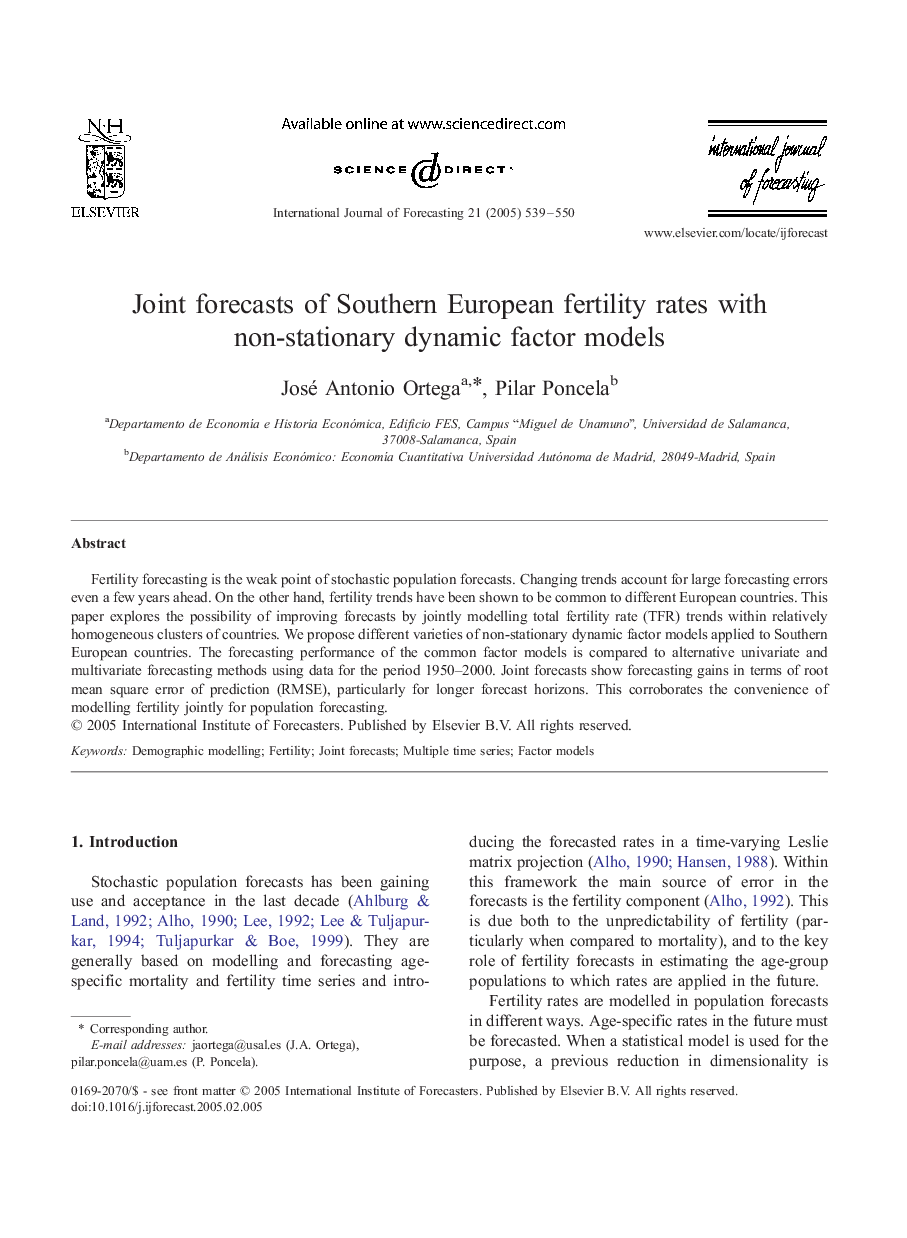| Article ID | Journal | Published Year | Pages | File Type |
|---|---|---|---|---|
| 9732537 | International Journal of Forecasting | 2005 | 12 Pages |
Abstract
Fertility forecasting is the weak point of stochastic population forecasts. Changing trends account for large forecasting errors even a few years ahead. On the other hand, fertility trends have been shown to be common to different European countries. This paper explores the possibility of improving forecasts by jointly modelling total fertility rate (TFR) trends within relatively homogeneous clusters of countries. We propose different varieties of non-stationary dynamic factor models applied to Southern European countries. The forecasting performance of the common factor models is compared to alternative univariate and multivariate forecasting methods using data for the period 1950-2000. Joint forecasts show forecasting gains in terms of root mean square error of prediction (RMSE), particularly for longer forecast horizons. This corroborates the convenience of modelling fertility jointly for population forecasting.
Related Topics
Social Sciences and Humanities
Business, Management and Accounting
Business and International Management
Authors
José Antonio Ortega, Pilar Poncela,
